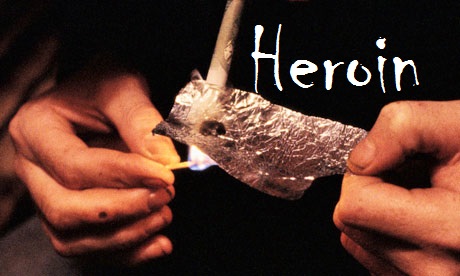 Heroin has made a comeback. As if the current epidemic of prescription painkillers wasn’t enough, addicts are finding pure heroin cheaper and easier to get than ever before. As a result heroin is getting more and more media attention.
Heroin has made a comeback. As if the current epidemic of prescription painkillers wasn’t enough, addicts are finding pure heroin cheaper and easier to get than ever before. As a result heroin is getting more and more media attention.
With pharmaceutical companies reformulating painkillers so they are more difficult to abuse, people are turning to the street drug heroin for a stronger, more affordable high. Here is what a former addict had to say about the influx of heroin in San Diego:
“I had been in a car accident in February (2012) and was put on Loritab and Roxicodone (Oxycodone) by my doctor. After a while it just got too expensive and too degrading to always go to the doctor and beg for refills. So I knew this guy. It seemed like more and more of my friends were doing this thing (heroin) and I could pay so much less for a big bag of tar. No doctors, no insurance to explain things to. Just meet a guy and get high all the time. Heroin is everywhere. I used to think it was this legendary thing of nightmares. Now, it’s more common than anything else. Even pot.”
-MD San Diego
Heroin in its pure form is a white powder with a bitter taste. However, most heroin varies in color from white to dark brown. “Black tar” heroin is sticky like roofing tar or hard like coal, and its color may vary from dark brown to black. Users administer heroin by injecting, smoking, or snorting it.
Heroin comes to America through foreign sources of opium. Production of this drug occurs in South America, Mexico, Southeast Asia, and Southwest Asia. Nationwide, in 2000, South American heroin ranged from $50,000 to $200,000 per kilogram. At that time, southeast and southwest Asian heroin ranged in price from $40,000 to $190,000 per kilogram. Wholesale-level prices for Mexican heroin were the lowest of any type, ranging from $13,200 to $175,000 per kilogram. Prices are different depending on who the buyer and seller are, how much is purchased, how often it is purchased, how pure it is and how much it costs to transport the drug.
Heroin is a highly addictive drug that is derived from morphine. Morphine comes from the opium poppy. Opiate drugs such as heroin slow down the activity of the central nervous system and messages going to and from the brain and parts of the body. This includes physical, mental and emotional responses. The side effects of heroin include: euphoria, drowsiness, apathy, nausea and vomiting, slurred speech, constricted pupils, decreased physical activity, convulsions, respiratory depression, and greater susceptibility to infection. The risks of taking heroin also include contracting hepatitis or AIDS from infected needles, entering a coma, and death.
Heroin addiction is a serious and life threatening problem. It can occur very quickly among abusers who use heroin on a regular basis. This is due to the fact that tolerance develops upon repeated use of the drug. Users suddenly find that they are using more and more heroin to achieve the same high that they originally felt. Heroin affects the user’s brain in regions that produce euphoric sensations as well as physical dependence. This drug is notorious for its ability to produce both psychological and physical addiction. Chronic heroin users will experience withdrawal symptoms when heroin use is discontinued. Heroin overdose is responsible for the majority of accidental drug related deaths in the U.S.
During 2000, there were approximately 146,000 new heroin users in the United States. The average age of those who first used heroin during the year was 22 years. According to the 2001 National Household Survey on Drug Abuse, approximately 3.1 million (1.4 percent) Americans age 12 or older had tried heroin at least once in their lifetime, 456,000 (0.2 percent) used heroin in the past year, and 123,000 (0.1 percent) reported past month heroin use. Results from the 2002 Monitoring the Future Study show that 1.6% of 8th graders, 1.8% of 10th graders, and 1.7% of 12th graders surveyed reported using heroin at least once during their lifetimes.
